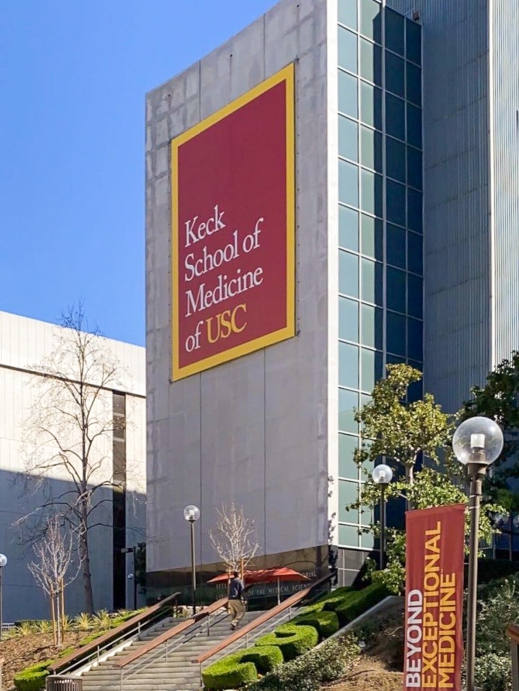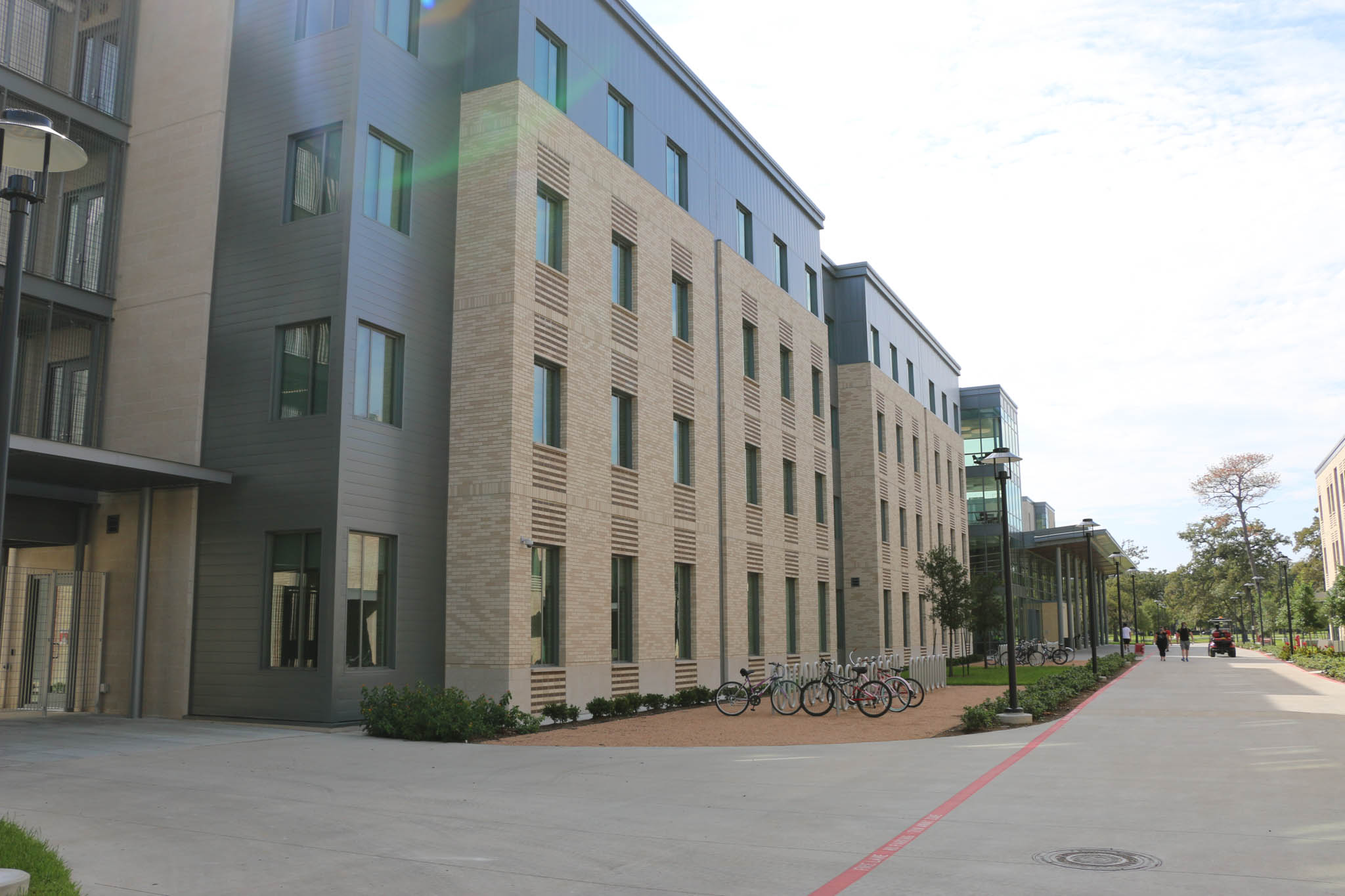Posted on 23 May 2021.
290 flags placed in the Gallivan Center in Salt Lake City on May 22, 2021 to commemorate the recent lives lost in Palestine and Colombia. Each flag has the name of a person killed on it and were placed by protesters, 248 flags for Gazans and 42 for Colombians. (Photo by Natalie Colby | Daily Utah Chronicle)
Muna Omar sat in the bed of a light blue truck driving through the streets of downtown Salt Lake City, breaking up the red, black, white and green colors of the Palestinian flag covering much of the crowd. Through a megaphone, she led the several hundred people marching behind her in chants of “Viva, Viva Palestina” and “Free, Free Colombia,” as part of a rally on Saturday, May 22.
The event, Standing in Solidarity with Palestine and Colombia, was hosted by the Party for Socialism and Liberation, the ANSWER Coalition, and Omar with the intent to bring light to issues happening in both countries.
Over 200 people have died — most of which are Palestinians killed by Israeli airstrikes in the Gaza Strip — as a result of fighting between Israel and Palestine since May 10. This is part of an ongoing dispute over territory escalated once again when Israeli forces raided Al-Aqsa Mosque in Jerusalem on April 13, the first day of Ramadan. According to USA Today, the fighting is the most brutal it’s been in years.
On Friday, May 21 a cease-fire between Israel and the Palestine militant group Hamas was enacted. However, many protesters and speakers said the struggle continues.
“The world has let us down time and time again,” said Noor, a Palestinian University of Utah senior studying biology and chemistry, who wanted to keep her last name anonymous. “Growing up, I wished someone would come and save us. At the age of 13, I realized it was up to us to save ourselves.”
Noor told the crowd who held Palestinian and Colombian flags that when Israel displaced their grandparents, they failed to consider the grandchildren who would continue to fight for human rights.
“For the past 73 years, the world has excused our genocide, only reporting when we fought back, when we resisted. This was to manipulate us into looking like terrorists, to demonize us,” she said.
Additionally, organizers continually highlighted similarities in the struggles for Palestinian and Colombian liberation.
Colombians began protesting after President Iván Duque Márquez proposed a plan to raise taxes on everyday goods and services. The demonstrations have been consistent since late April and according to the New York Times, “quickly morphed into a widespread expression of anger over poverty and inequality.” More than 40 people have died.
Devin Martinez, a member of PSL, spoke about the events in Colombia, saying this is the third wave of protests since 2018, when Duque first took office as president. He labeled the Colombian government’s responses as U.S.-funded right-wing violence.
“As a first-generation American, I’m here in front of you today as a result of U.S.-funded violence in Latin America,” Martinez said. “We know that any advancement that the people in Colombia or Palestine get towards their own liberation will bring us that much closer to our liberation here.”
Omar said she continues to plan events like these for her little cousins who were in the crowd.
“I do this for all the younger generation so they don’t have to grow up as targeted citizens,” Omar said.
The protest started at the Wallace F. Federal building, and after several speakers, the group marched to the Gallivan Center.
Once protesters reached the Gallivan Center they were handed white and red flags, each with the name of a person killed recently in Palestine and Colombia, 290 total flags. 248 were Gazans and 42 Colombians.
During a moment of silence and prayer, they placed the flags in the grass area.
“Please let’s honor the victims and the martyrs, may they rest in eternal peace. Let us reflect on the lives that they may have lived, or didn’t even get the chance to live,” Omar said.
Omar emphasized the importance of elevating authentic voices and stories, bringing up friends and family to speak about their experiences under Israeli occupation. As Palestinians, they spoke about their personal experiences in Palestine and their love for the land and people.
Lina Ghabayen was born in Gaza and spent her first 18 years living there, and said most of what she remembers is after the siege had started.
“I was defined by the question ‘when will I die?’ Will I die tonight? Will I die tomorrow? When’s the next attack that’s gonna make me one of those deaths?” Ghabayen said.
She spoke of memories of hiding under the beams of her house in fear her family would be targeted, recalling the destruction of the 2009 and 2012 wars.
“That’s my home, those are our memories, that’s our identity they are trying to get rid of. How many times are we going to go through this situation? How many times are we going to beg to be heard?” Ghabayen said. “It’s ethnic cleansing.”
Diego Gabriel, a senior studying political science, said he was at the protest to stand in solidarity with his Palestinian and Colombian brothers and sisters. Gabriel said the U can support Palestinians and Colombians by changing curriculum and amplifying their voices.
“[They should] allow Palestinian voices to be amplified without assuming that it’s antisemitism and not elevating imperialist voices like in their political science department where they prefer to justify American intervention rather than people’s sovereignty,” he said.
After returning to the Wallace F. Federal building, Omar spoke one last time to the remaining crowd.
“So I’m going to tell you, we appreciate it, but Palestinians don’t want your money, we want the end of Israeli occupation, we want the right to return to a liberated homeland,” Omar said. “Colombians do not want your money, they want the ability to live in a free liberated homeland, away from U.S. control and hegemony.”
k.silverstein@dailyutahchronicle.com
@chronykayleigh
n.colby@dailyutahchronicle.com
@natalie__news
The post ‘Resistance is Justified, When People are Occupied’: Protesters Gather in Support of Colombia and Palestine appeared first on The Daily Utah Chronicle.







